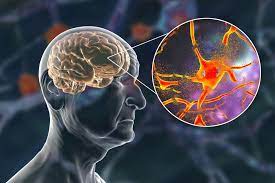Dementia and attention deficit hyperactivity disorder (ADHD) are two common neurodevelopmental disorders that present numerous challenges in diagnosis, treatment, and prevention. This article will explore the risk factors and ethnic differences in these two diseases to better understand their influencing factors and how to carry out targeted prevention and treatment efforts.
Dementia is a syndrome characterized by cognitive decline, behavioral abnormalities, and progressive impairment of daily living abilities. The causes of dementia are complex, including genetics, environment, living habits and other factors. According to research, age, gender, genetics, chronic diseases, head trauma, etc. may increase the risk of dementia. Among these risk factors, genetics is one of the most important factors, such as the APOE4 gene, which is closely related to the risk of Alzheimer's disease.
Attention deficit hyperactivity disorder (ADHD) is a common childhood neurodevelopmental disorder characterized by inattention, hyperactivity, and impulsivity. The causes of ADHD are equally complex and involve genetic, environmental, social and other factors. Research shows that ADHD is related to a variety of risk factors, such as family background, parental education methods, living environment, etc. In addition, ADHD may also be affected by factors during pregnancy and perinatal period, such as smoking, drinking and other unhealthy lifestyle habits of pregnant women.
In terms of ethnicity, the distribution and impact of dementia and ADHD vary by race, ethnicity, and geographic location. Research shows that African Americans and Latinos have higher rates of dementia than other ethnic groups, while Asian Americans have higher rates of ADHD than other ethnic groups. In addition, the prevalence of dementia and ADHD also differs in different geographical locations, which may be related to environment, living habits, socioeconomic and other factors.
in conclusion:
Risk factors for dementia and attention deficit hyperactivity disorder involve many aspects, including age, gender, genetics, environment, etc. There are differences in the distribution of dementia and ADHD among different ethnic groups, which may be related to factors such as genetics, environment, living habits, and socioeconomics. Understanding these risk factors and ethnic differences can help us better prevent, diagnose and treat both diseases.
For the prevention and treatment of dementia, attention should be paid to high-risk groups, such as the elderly and patients with chronic diseases, and regular cognitive function assessments should be conducted to promptly detect and intervene in cognitive decline. In addition, based on the relationship between APOE4 gene and Alzheimer's disease, targeted gene therapy may be carried out in the future.
For the prevention and treatment of ADHD, attention should be paid to early childhood screening and intervention, and professional educational counseling and psychological support should be provided. Based on the risk factors of different ethnic groups, targeted preventive measures should be carried out, such as improving the pregnancy and perinatal environment and reducing childhood stress and adverse stimulation.
In summary, the risk factors and ethnic differences in dementia and attention deficit hyperactivity disorder provide new perspectives and challenges for disease prevention and treatment. Future research should continue to focus on these influencing factors to enable more effective prevention, diagnosis, and treatment efforts.
references:
Due to space limitations, it is omitted here. When actually writing the paper, the references cited should be listed.



